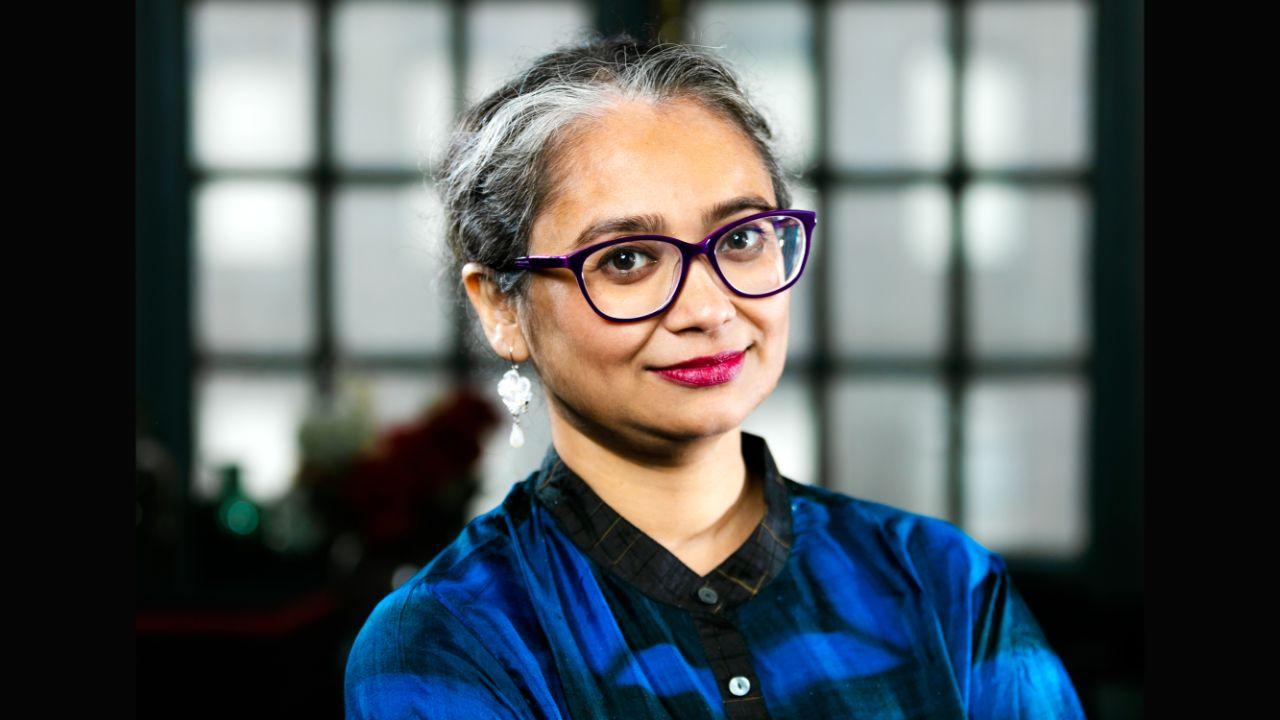On International Women’s Day, feminist researcher, writer, and activist Manjima Bhattacharjya curates a reading list that delves into the layered realities of working women

Representative Image. Pic/iStock
March 8 is celebrated as International Women’s Day across the globe. Rooted in political and labour movements of the West, the day is a celebration of the struggle of women workers for their rights. “Work is a personal issue for all women. There is the anxiety around paid work, the burden of unpaid housework, the guilt of care work, the soar of ambitions, and the crush of not always being able to achieve them,” says Manjima Bhattacharjya. The feminist researcher, writer, and activist has been a part of the women’s movement for over two decades and her areas of specialisation include gender and sexuality, and labour and the body.
ADVERTISEMENT
Her two books, Mannequin: Working Women in India’s Glamour Industry (2018, Zubaan Books), and Intimate City (2022, Zubaan Books) explore the experiences of women in two of the most demanding industries – fashion, and sex work – with nuance. To further our understanding of women and their relationship to work, she curates a reading list that encapsulates the multidisciplinary and all-permeating experiences of working women, “As I was curating this list, I realised that there are still too few books that explore the world of women’s work and the possibilities it opens up for us. There are narratives of women’s family lives, experiences of violence and marginalisation, but few on the exhilarations and frustrations of a working life. Why must Dalit women write only of violence, or trans women and men of marginalisation? What about the experiences of persons with disabilities, of single mothers, of tribal youth? Why do we know so little about one another’s working lives? If we did, perhaps we would understand one another better.”

Manjima Bhattacharjya is the author of Mannequin: Working Women in India’s Glamour Industry and Intimate City. Pic/David Beyda
International Women’s Day may be the designated day to celebrate the achievements of women, but pick up these seven books for a deeper understanding and appreciation of women and their work all year-round.
The Feminine Mystique by Betty Friedan (1963, WW Norton)
Challenging an age-old assumption that women were meant to draw gratification from their role as housewives, The Feminine Mystique sparked the second-wave feminism in the United States. “This book is often eschewed in favour of other feminist classics like Mary Wollstonecraft’s ‘A Vindication of the Rights of Women’ or Simone de Beauvoir’s ‘The Second Sex’. But when I was just discovering feminism in my 20s, the first chapter – in fact, this first paragraph - of Friedan’s book blew my mind:
'The problem lay buried, unspoken, for many years in the minds of American women. It was a strange stirring, a sense of dissatisfaction, a yearning that women suffered in the middle of the twentieth century in the United States. Each suburban wife struggled with it alone. As she made the beds, shopped for groceries, matched slip-cover material, ate peanut butter sandwiches with her children, chauffered Cub Scouts and Brownies, lay beside her husband at night, she was afraid to ask even of herself the silent question: "Is this all?"'
Friedan’s dissection of this “problem with no name” stopped me in my tracks and got me thinking about what lay behind the image of the ideal housewife in ads, smiling away as they cooked and cleaned and sent children off to school. Friedan writes, “We can no longer ignore that voice within women that says: “I want something more than my husband and my children and my home” – a yearning to work outside the home that I realized was not unique to American women, reflected in women like my mother and others around her,” recalls Bhattacharjya.
An Educated Woman in Prostitution: A Memoir of Lust, Exploitation, Deceit (Calcutta, 1929) by Manada Debi, Translated by Arunava Sinha (2021, Simon and Schuster India)
This moving book follows the life of a Bengali Brahmin woman raised in a wealthy household who elopes with a lover and is abandoned by him, leading her to prostitution. The autobiography paints a truthful picture which is accentuated through the articulate and reflective piece of writing. “I had finished writing ‘Intimate City’ (on sex work and the internet) when I read it, and was alarmed at how little things had changed over 100 years. The narrative highlighted how impossible it was to survive outside the institution of marriage for a woman, and what it was like to live and work as a prostitute in the 1900s, perhaps one of the few groups of women who enjoyed some level of financial independence,” shares Bhattacharjya.
Coolie Woman: An Odyssey of Indenture by Gaiutra Bahadur (2013, Hachette India)
The best stories can sometimes be found within our families. American journalist Gaiutra Bahadur excavates the archives of her family to portray the life of her great-grandmother across continents in this page-turner. “This book is a fascinating epic across oceans, in which the author tracks down the history of her great grandmother who sailed in 1903 from India to Guiana as one of many ‘coolie women’ to work as indentured labour in British plantations. Bahadur’s deep archival research unearths not just her great-grandmother’s story, but makes visible the stories of a million other women who have not been written into the history of migration and labour,” says Bhattacharjya.
Factory Girls by Leslie T. Chang (2008, Random House)
This book reveals previously untold stories about the everyday lives of the Chinese migrant factory workers. Millions of Chinese women have migrated from the rural regions to the urban centres of industrialisation to fuel the factories which drive China’s growing economy. “Factory Girls stunned me with its scale and depth of stories of young women working in factories in China. These stories were like nothing I’d heard before. They showed me how meaningful even mundane work was to women. These young women worked in terrible conditions but were having fun! The capacity to earn had opened new doors of freedom and independence for them that they were learning to leverage,” shares Bhattacharjya.
Mobile Girls Koottam: Working Women Speak by Madhumita Dutta (2022, Zubaan Books)
An understanding of different perspectives is what contributes immensely to the growth of an individual. Madhumita Dutta’s book offers us an up-close look into the lives of young rural migrant women, and invites readers to reflect upon our privileges and engage in a process of learning and unlearning. “This book is a refreshing account of conversations between the author and a group of young women working in an electronics factory in Tamil Nadu on caste, labour, love, marriage and work. They reveal how work and workplaces aren’t just places to earn a living, but are spaces of camaraderie where friendships and solidarities amongst women are built for a lifetime,” shares Bhattacharjya.
Let’s Talk Money by Monika Halan (2018, Harper Business)
While money and financial independence has always been central to the women’s movement, not enough emphasis has been laid on financial planning—which in today’s times is a key tool for working women. Bhattacharjya considers this to be an unusual pick, but she feels it’s essential reading for working women, “Too many of us work hard but don’t think about saving smartly for ourselves. There is something scary about being strategic about money, something we are wary of, as if it is not for us. But this is a gendered feeling, as Halan quickly shows. This book opened my eyes to my ignorance and made me, at the very least, think about how to manage money and that I have a right to the money I earn.”
Mannequin: Working Women in India’s Glamour Industry by Manjima Bhattacharjya (2018, Zubaan Books)
Bhattacharjya is the author of this nuanced book which details the working lives of women models and beauty pageant aspirants in post globalization India. “Even if I wasn’t the author, I’d include it in this list. I realised as I wrote it that what young women in the modelling world faced was applicable to all working women. Like models, all women’s journeys to financial independence are strewn with hurdles, like all kinds of conditions from families and lovers and the danger of being stigmatised for staying out ‘too late’ or being ‘too ambitious’. I found that just like for models, our work transforms us and often makes us who we are.”
Also Read: Daring to drive: How Mumbai’s female rickshaw drivers are beating the odds
 Subscribe today by clicking the link and stay updated with the latest news!" Click here!
Subscribe today by clicking the link and stay updated with the latest news!" Click here!







